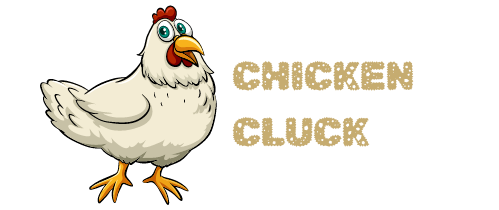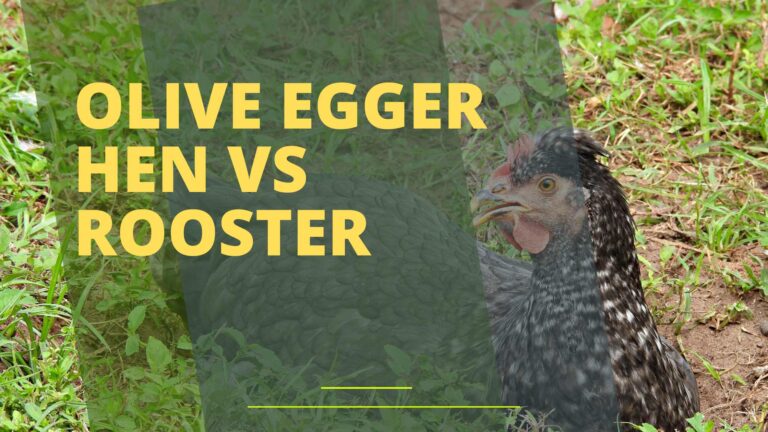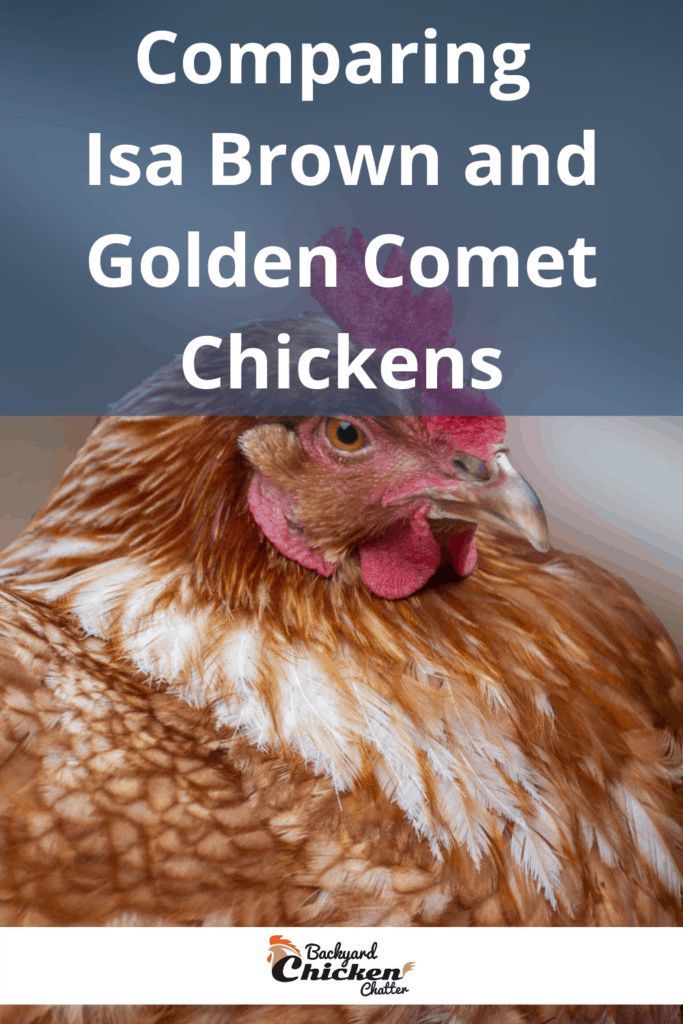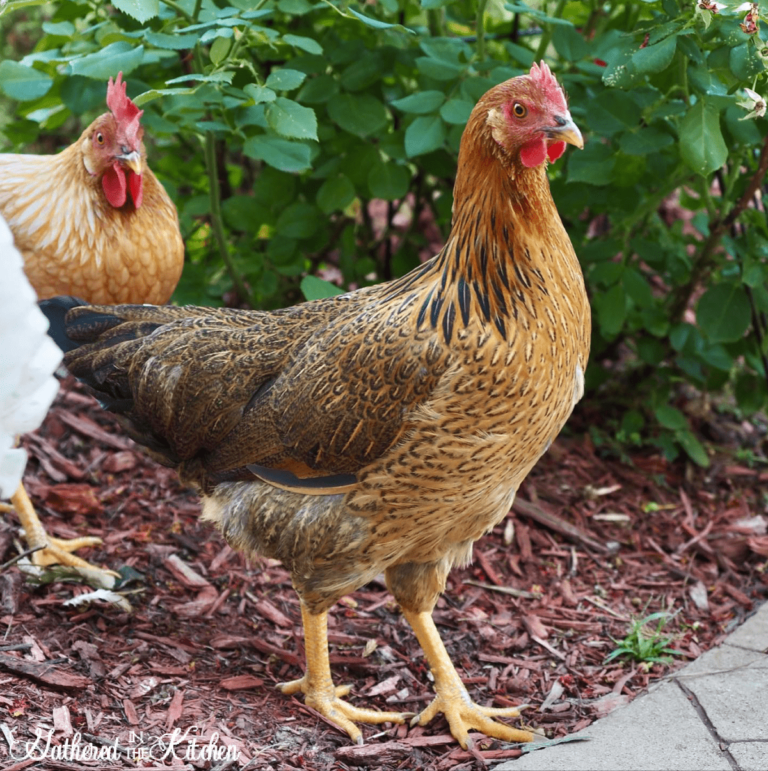A Brahma rooster is larger and more colorful than a hen, with distinctive plumage. Roosters possess long, flowing tail feathers and an impressive crest.
Brahma chickens are majestic birds renowned for their size, gentle nature, and striking appearance. Originating from the Brahmaputra region in India, these birds were developed in the United States and have become a favorite among poultry enthusiasts. The roosters are notably grand, with their robust bodies and ornate feather patterns, often in shades of gold, black, and white.
Conversely, the hens are slightly smaller and more subdued in color, yet they share the breed’s calm demeanor. Known for their hardiness in cold weather and good laying capabilities, Brahma hens are also excellent mothers. Overall, the Brahma breed stands out in the backyard flock for both its aesthetic appeal and utility.
Credit: www.backyardchickens.com
Distinctive Traits Of The Brahma Rooster
The Brahma rooster stands out with distinct features that set this breed apart from its hen counterpart. Known for their impressive stature and behavior, these roosters are a sight to behold. We’ll dive into what makes the Brahma rooster truly remarkable.
Majestic Size And Build
The Brahma rooster boasts a large frame, with a towering presence in the yard. A full-grown male can typically weigh between 10 to 12 pounds, making them one of the heaviest chicken breeds. Their sheer size is complemented by sturdy legs and a broad, deep chest. Their strength and stature are easily noticed, in contrast to the Brahma hen, which is markedly smaller.
Striking Plumage Patterns
- Brahma roosters feature eye-catching plumage, with a variety of colors such as light, dark, and buff.
- They have feathered shanks and toes, giving them a fluffy appearance on their legs.
- Their saddle and hackle feathers shine with iridescence, displaying a mix of colors that can include black, white, and reddish-brown.
Crowing And Behavior Differences
Brahma roosters have a distinctive, deep crow that resounds throughout the farm, especially at dawn. Their crow serves as a territorial call and demonstrates their dominance. Brahma roosters are generally calm and docile, but during breeding season, they become more active and protective. They are vigilant guardians of their flock, always watching for threats.
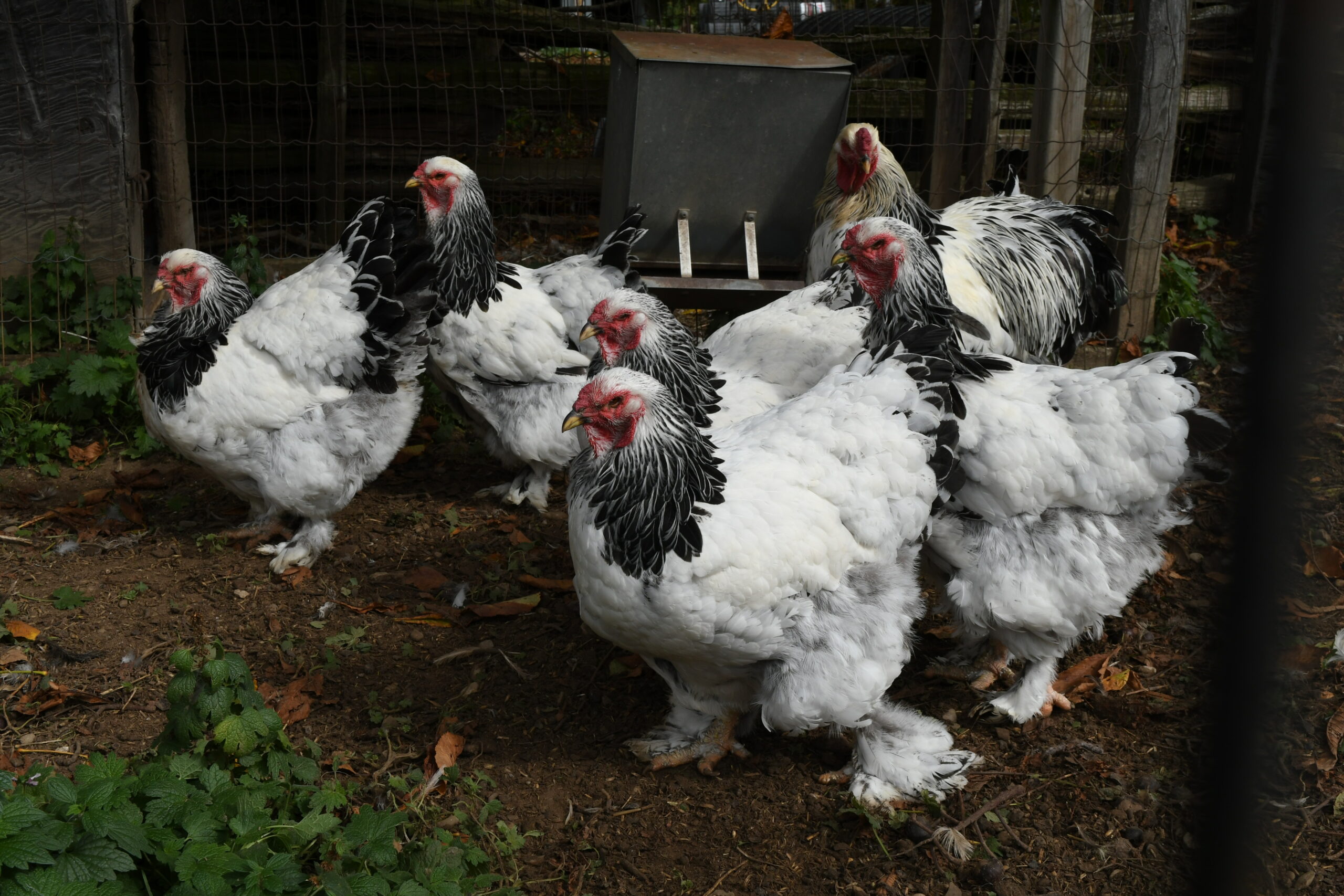
Credit: livestockconservancy.org
Understanding Brahma Hens
The Brahma chicken stands out in the backyard flock with its impressive size and gentle nature. Known as the ‘King of Poultry,’ the Brahma chicken is a favorite among poultry enthusiasts. But what about the hens of this breed? Let’s dive into the world of Brahma hens, exploring their unique characteristics from size to social behavior.
Size And Appearance
Brahma hens exhibit a majestic look with feathered feet and dense plumage. They are large birds, though not as large as the roosters.
- Weight: Hens typically weigh around 8-10 pounds.
- Feathers: They have a variety of colors like light, dark, and buff.
- Their pea combs and fluffy appearance keep them warm in winter.
Egg-laying Capabilities
Brahma hens are not just pretty; they are also prolific layers.
| Age to lay: | They start at around 6 months. |
|---|---|
| Eggs per year: | They can lay 150-200 eggs. |
Their eggs are brown and large in size.
Hen Temperament And Social Structure
Brahma hens are known for their calm demeanor.
- They are friendly and can become family pets.
- In the flock, they often fall in the middle of the pecking order due to their nature.
Youthful hens may be more active, while older ones are more sedate.
Development And Growth Variations
The journey from hatchling to full-grown adult tells a tale of growth and change, especially when comparing the Brahma rooster to the hen. Recognizing the variations in development can provide a fascinating insight into their unique growth processes.
From Chick to Adult
From Chick To Adult
The Brahma chicks exhibit early distinctions that hint at their gender. As these chicks progress, subtle differences become more evident. With attentive care, these flourishing birds steadily gain features reflective of their sex.
Rate of Growth
Rate Of Growth
The pace at which Brahma chicks grow is both remarkable and gender-specific. Roosters generally grow faster, gaining height and heft at an impressive rate, while hens develop at a steadier, more measured pace.
| Age | Roster Growth | Hen Growth |
|---|---|---|
| 1 Month | Quick | Moderate |
| 3 Months | Rapid | Gradual |
| 6 Months | Peaking | Consistent |
Physical Maturity Indicators
Physical Maturity Indicators
- Roosters begin to display prominent combs and wattles.
- Hens develop fuller bodies and start egg-laying behaviors.
- Roosters showcase their brilliant plumage and assert dominance.
These milestones mark crucial stages in the maturation process, pushing them closer to their roles within the flock.
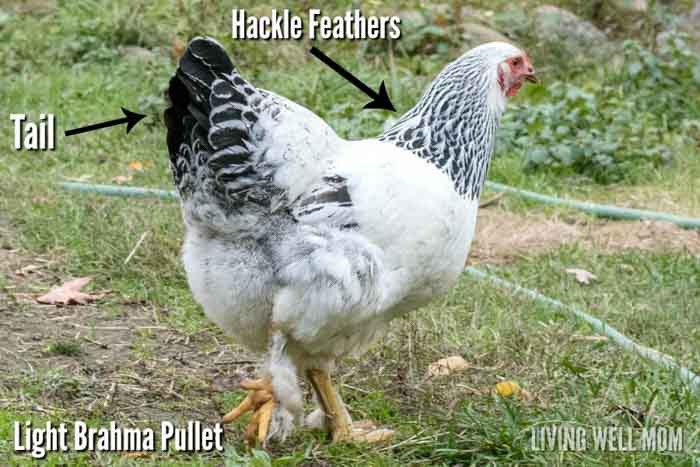
Credit: livingwellmom.com
Gender Roles In The Flock
Understanding the gender roles of Brahma chickens in a flock is crucial.
These roles affect social structure and daily activities.
Below, let’s explore the distinct responsibilities of roosters and hens.
Rooster’s Role And Hierarchy
Roosters stand out as natural leaders within the flock.
These bold birds have several key duties.
- Mating: Ensuring the continuation of the flock.
- Protection: Guarding against predators.
- Food scavenging: Finding and sharing food.
The pecking order in roosters is visible.
The top rooster commands respect and maintains order.
Hen’s Role In Nesting And Brooding
Hens have critical nesting roles.
Their primary focus is on egg laying and chick rearing.
- Nesting: Creating a safe place for eggs.
- Brooding: Incubating eggs for hatching.
- Chick care: Teaching young chicks essential skills.
Interactions And Flock Dynamics
Interaction between roosters and hens is complex.
Each bird plays a role in the flock’s health and success.
Rooster and hen dynamics include social bonding and resource sharing.
Balance is key for a peaceful and productive flock.
Breeding Characteristics
When exploring the Brahma breed, breeding characteristics shine. Hens and roosters bring unique traits. Success depends on understanding these differences. Let’s delve deeper into the world of Brahma chicken breeding.
Selective Mating And Genetics
Selective mating boosts desired traits in Brahma chickens. Roosters and hens get chosen for their size, color, and temperament. These factors play a big role in offspring quality.
- Size: Roosters typically larger than hens.
- Color: Feather patterns get selected for variety.
- Temperament: Calm chickens often preferred.
Breed Preservation Techniques
Brahma chickens have a rich heritage worth preserving. Enthusiasts use several techniques:
- Keeping thorough breeding records.
- Participating in breeder networks.
- Following standardized breed guidelines.
Common Health Issues In Roosters Vs. Hens
| Roosters | Hens | |
|---|---|---|
| Reproductive | Infertility issues | Egg-laying problems |
| Feet | Fighting injuries | Bumblefoot from perching |
| Weight | Heart strain from bulk | Ovarian issues from size |
Understanding these breeding basics ensures a brighter future for Brahma chickens. Both roosters and hens contribute vital aspects to the genetic pool.
Care And Husbandry
Caring for Brahma chickens, whether roosters or hens, is a joyful journey. They possess a calm demeanor making them a favorite for poultry enthusiasts. Brahma chickens are heavy, robust birds with an elegant appearance and require specific attention to thrive. Understanding their needs ensures a happy, healthy flock. Let’s explore the essentials of Brahma chicken care.
Nutritional Needs
Brahma chickens benefit from a balanced diet. As large birds, they need quality feed rich in protein to support their significant size and feather growth. Young chicks require a starter feed with around 20% to 22% protein. An adult Brahma’s diet should consist of 16% protein layer feed. Supplement with fresh greens, grains, and occasional treats such as mealworms for variety.
Shelter And Space Requirements
Adequate shelter is critical for Brahma chickens due to their size and feathering. Provide a spacious coop with proper ventilation and cleanliness to prevent respiratory issues. Each Brahma needs at least 8 square feet of coop space. As cold-hardy birds, their feathered feet need protection from muddy and wet conditions to prevent frostbite. An outdoor run gives them the space to forage and exercise, essential for their well-being.
Handling And Bonding With Brahma Chickens
Brahma chickens are known for their gentle nature, which makes handling easier. Handle them regularly and gently to build trust. Create a routine to feed and tend to your chickens; this develops a positive association with your presence. An extendable bonding experience includes free-ranging under supervision, where they can explore while bonding with you.
Show Birds And Exhibition
The world of poultry shows is a dazzling arena where the grandest of fowls prance and preen. The Brahma rooster versus the hen offers a spectacle like no other. In these exhibitions, every feather and step counts as these avian beauties vie for the coveted ribbons. Entrants must meet rigorous standards. Judges scrutinize based on defined criteria.
Preparing For Poultry Shows
Success in the show ring starts well before the event. Here’s how enthusiasts ready their Brahmas:
- Training: Birds learn to stand and walk properly.
- Grooming: Plumage must shine; bathing and preening are key.
- Diet: A balanced feed ensures good health and feathers.
- Health check: Vaccinations and vet visits keep birds show-ready.
Standards Of Perfection
The
American Poultry Association
sets the bar with their Standards of Perfection book. This guide details the ideal traits for show birds:
| Feature | Brahma Rooster | Brahma Hen |
|---|---|---|
| Size | Large and powerful | Slightly smaller, refined |
| Plumage | Dense and full | Smooth and neat |
| Color | Bright and consistent | Rich and even |
Judging Criteria Differences
While both Brahma roosters and hens must be top-notch, judges have different expectations:
- Roosters — judged on size, stance, and masculine characteristics.
- Hens — focus is on femininity, plumage softness, and brooding potential.
Judges also consider unique traits, such as the rooster’s crow and the hen’s motherly qualities.
Understanding The Brahma Breed
The Brahma chicken stands out in the poultry world with its impressive size and gentle nature. Known for their fluffy feathers and striking appearance, both the Brahma rooster and hen have remarkable characteristics that set them apart. Esteemed for their dual-purpose qualities, these chickens are not just a farmer’s pride but also a backyard poultry enthusiast’s delight.
Historical Significance
The Brahma breed has a rich history dating back to the 1800s. Brought to the United States from Asia, it quickly gained fame for its size and strength. Initially known as the “Shanghai” bird, the Brahma was instrumental in developing other breeds. Its legacy is engrained in poultry history.
Modern Uses And Popularity
Today, Brahmas remain popular for their meat and egg production capabilities. Their calm demeanor makes them ideal for backyard flocks. With their majestic presence, these birds are also frequent stars in poultry shows and a favorite amongst bird enthusiasts.
- Docile pet for families
- Consistent egg layers
- Meat production
- Show birds for exhibitions
Contributions To Poultry Breeding
Brahma chickens have played a key role in the development of new chicken varieties. Their genes have been essential in creating breeds with better cold resistance and size for meat production. Their contribution to genetic diversity in poultry is unmatched.
| Breed trait | Contribution |
|---|---|
| Size | Large birds suited to meat production |
| Feathering | Cold-resistant breeds with heavy feathering |
| Temperament | Docile nature passed on to new breeds |
Conclusion
Deciding between a Brahma rooster and hen hinges on your flock’s needs. Roosters charm with their impressive stature and protective nature, while hens offer steady egg production and motherly qualities. Whatever your choice, these majestic birds will surely elevate your backyard coop experience.
Embrace the Brahma’s grandeur for a fulfilling poultry-keeping journey.
